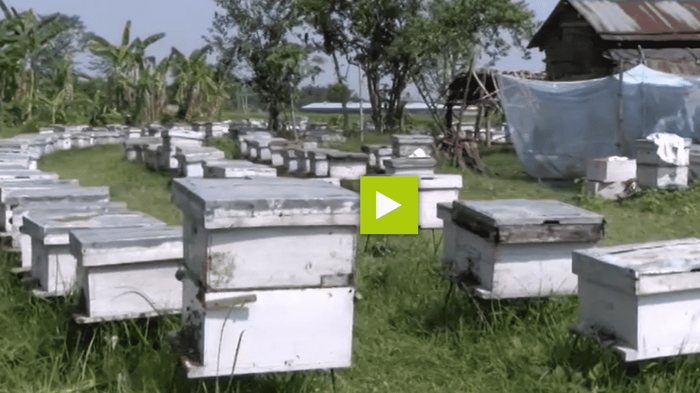Honey is an exiting business opportunity with increase in demand from the cites and villages due to its nutritional value.
In traditional hives, harvesting honey is difficult as bees make their own wax combs that are often attached to each other. In modern beehive, honey is extracted using a honey extractor then collected without damaging the combs thus saving time and energy on constructing replacement combs.
Pieces of wood that does not distort easily, rot, have any smell that will repel the bees and light to carry are selected to make a beehive.
Making a beehive
In making hives select pieces of wood of about 2 cm thick, 50cm long, 46cm wide and 26cm high on both sides. Smoothen the inner surface to ensure that the bees do not waste time smoothening it. Nail two wooden bars to the bottom to act as stand.
Make an entry gate of 11 cm long and 0.8 cm high on the bottom side of the small plants to allow the bees but keep out the wasp and other predators. Leave a protruding end of 5 cm just below the entry gate for the bees to land before entering the bee hive.
Making frames for the bees helps them in attaching their wax comb, for each frame cut 2 bars 21. 6 cm long 2cm thick and 4 cm wide and the side bars into a catapult shape for the bees to move freely between the combs. Put wires along the holes in a loop and nail it to the frame.
Protecting the bees
Bees needs warmth but cannot work when its too hot, having a removable cover helps to solve the problem. Cover the lid with aluminium sheet and create small openings on the side with a wire mesh to protect the hives from predators, sun and rain.
Paint the outside of the hives white or a light colour as other dark colours can distract the bees.
Place your hives off the ground, in the shade during summer and in the sun during winter.



















